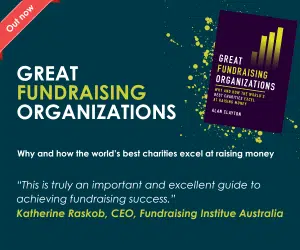Are charities ready for Gift Aid declaration changes?
From 6 April 2016, HMRC is changing the Gift Aid declaration that charities should use.
The new declaration is shorter, with the references to Council Tax and VAT removed. New wording highlights that if a donor hasn’t paid enough tax to cover their donations, they must pay the difference – a move which some suggest may put off donors from signing up to Gift Aid.
HMRC is concerned it might be paying Gift Aid to charities where an individual has not paid tax. In its November 2013 report into Gift Aid and relief on donations, the National Audit Office estimated that £55 million might be paid in error in refunds to charities where the donor had not paid the tax. HMRC is keen to close this gap.
HMRC has also updated its Retail Gift Aid Scheme guidance, which is available on its website. Many charity shops selling donated goods use the Retail Gift Aid Scheme to claim gift aid on the proceeds from sales of donated goods. Charities using the Retail Gift Aid Scheme need to review the revised HMRC guidance and make any necessary changes to their procedures, some from 1 January 2016. The guidance puts greater emphasis on staff training and internal checks on procedures, rules about having staff incentive schemes for this and requires shops operating Retail Gift Aid to have a notice in the window explaining that some items are sold as agent for others.
So what should charities be doing?
1. Charities should update their Gift Aid declarations in line with HMRC’s new requirements by 6 April 2016.
HMRC accepts that charities may use up old stocks of printed declarations after this, if ordered and printed before 21 October 2015. There is no need to replace old declarations, which conformed to the HMRC model wording when issued, as these remain valid. Charities also must update the wording on gift aid declarations on their websites, in text messages and confirmation letters that are sent for oral declarations
2. It is a good idea for charities to test their systems.
When HMRC conducts an audit, it takes a Gift Aid claim and checks the charity’s records of receipts and the declaration. For example, select a sample of 100 entries on a claim and ensure that you can perform this audit test.
Advertisement
3. Consider storing declarations safely and in a form where they can be retrieved easily.
You can outsource the scanning of documents if they are referenced properly which can be an efficient way to store them. Many charities that make substantial Gift aid claims use special donor management software that can store scanned declarations, donor and donation details and make Gift Aid claims. HMRC provides a list of Gift Aid software products that have successfully interacted with HMRC’s charities online system.
4. Segment donations so that Gift Aid claims are made for each type of donation.
For example, you might process major donors separately from the London Marathon runners, carrying out a higher level of checking to make sure the Gift Aid requirements are met. This can be helpful in terms of audit tests as an error rate can then be ‘ringfenced’ to the particular type of donations. You need to flag this approach in advance to HMRC when it announces an audit check, and provide information about your methodology.
5. Think about using oral declarations.
They can be used in face-to-face situations, such as in charity shops, at events and over the phone. Charities assume they must get a signed declaration, but asking for an oral declaration may be easier – they can collect the address and email and send a written confirmation to the donor. These confirmation letters should be updated to include the new model wording.
6. Review Retail Gift Aid guidance
If you operate the Retail Gift Aid Scheme, review the new HMRC Retail Gift Aid guidance, amend your procedures and undertake staff training to ensure you are following it.
Conclusion
It seems likely that the level of Gift Aid payable to charities, compared with donations, could plateau over the next few years as more people drop out of paying tax. If this is HMRC’s expectation, then it will be selecting charities with high and increasing levels of Gift Aid claims for inspection. So make sure your processes and systems are compliant – at least within the acceptable error rate.
Helen Elliott



